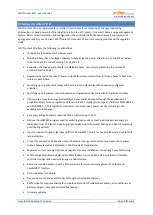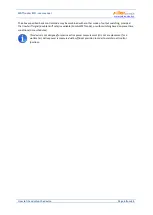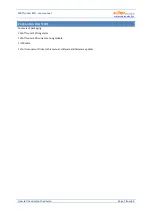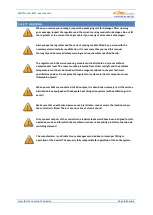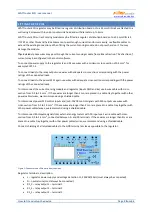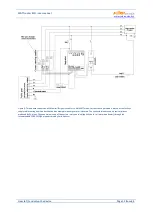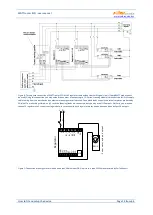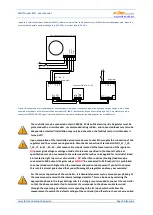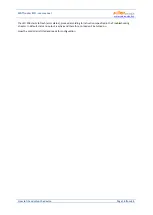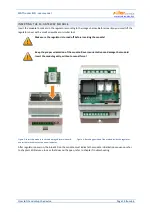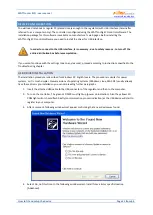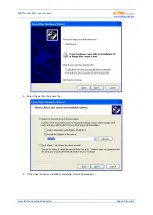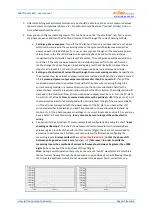
WATTrouter ECO - user manual
www.solarcontrols.cz
How to fit and setup the device
Page 9 from 66
FITTING THE DEVICE
WATTrouter ECO regulator may be fitted in a regular distribution board onto a 35 mm DIN rail or attached to a
wall using 2 screws with round or countersink head and with diameter up to 6 mm.
WATTrouter ECO current sensing module may be fitted in a regular distribution board onto a 35 mm DIN rail.
If CYKY or other thick and hard cables cannot pass through current transformers easily, use flexible cables to
extend the existing connections. When fitting the current sensing module do not press hard on it. You may
damage the module.
Tip:
Individual phase wires may pass through the current sensing module from either direction. The direction of
currents may be configured in the control software.
To connect power supply to the regulator (L and N) use wires with a minimum cross-section of 0.5 mm
2
, for
example CYKY 1.5.
To connect loads to the relay outputs use wires with adequate cross-section corresponding with the power
ratings of the connected loads.
To connect loads to the power SSRs again use wires with adequate cross-section corresponding with the power
ratings of the connected loads.
To interconnect the current sensing module and regulator (inputs GND and ILx) use 4-wire cable with cross-
section from 0.5 to 1.5 mm
2
. If these wires are longer than 2m or are placed in a cable tray together with other
power cables/wires, we recommend using a shielded cable.
To interconnect power SSR control inputs and/or 0-10VDC control signals with SSR outputs use wires with
cross-section from 0.5 to 1.5 mm
2
. If these wires are longer than 2m or are placed in a cable tray together with
other power cables/wires, we recommend using a shielded cable.
To interconnect S0 impulse signals from external energy meters with FB input use 2-wire cable with cross-
section from 0.5 to 1.5 mm
2
, connected between S+ and FB terminals. If these wires are longer than 2m or are
placed in a cable tray together with other power cables/wires, we recommend using a shielded cable.
Connect shielding of all shielded cables to the GND terminal as close as possible to the regulator.
Figure 1: Connector and LED description (top view).
Regulator terminals - description:
L – regulator power supply and voltage detection L1, 230VAC/50Hz (must always be connected)
N – neutral wire (must always be connected)
R1_1 – relay output 1 – terminal 1
R1_2 – relay output 1 – terminal 2
R2_1 – relay output 2 – terminal 1




